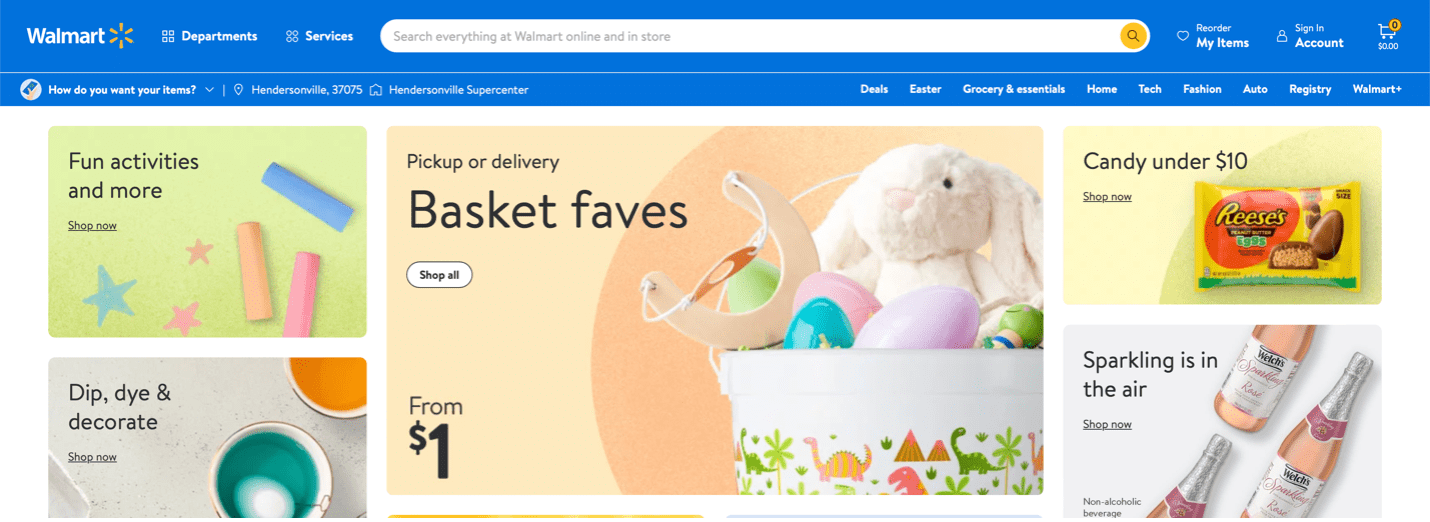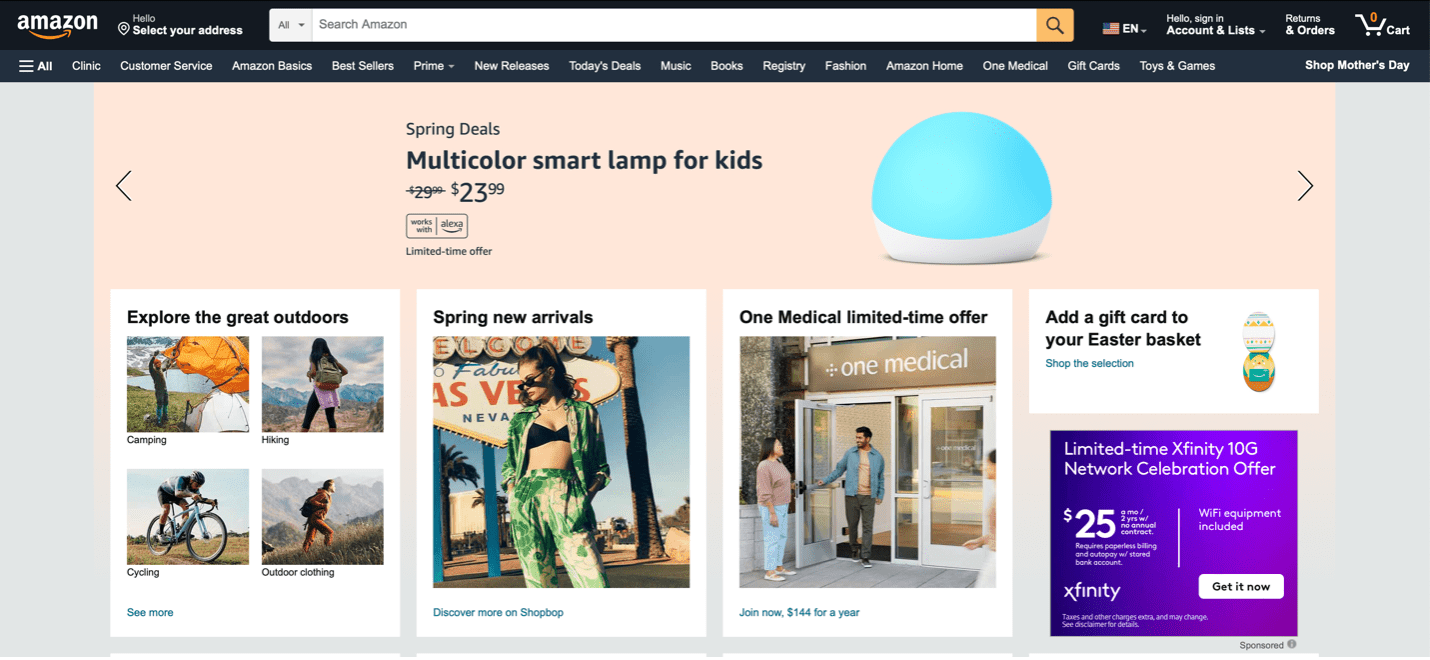Walmart Hopes Amazon-Like Website Will Boost Subscribers and Revenue

It is an understatement to say that Amazon and Walmart have a strong presence in the U.S. retail shopping space; the two giants dominate the industry and define the market, albeit in distinct spheres. Amazon remains the undisputable king of eCommerce, capturing 53% of retail spending online — a sphere in which Walmart lags at 6.8%, but makes up much of the difference via in-store sales.
To try to make online shopping less of a weakness and more of a strength, Walmart has begun emulating some of Amazon’s strategies since 2020, such as by introducing its membership service, Walmart+. Walmart’s latest move to capture some of Amazon’s eCommerce market share has been to refurbish its website and app to better resemble a modern, Amazon-like experience.

Free? Of course.
You've uncovered one of our premium articles. Register to keep reading and receive free unlimited access to all our premium content.

Walmart’s New Site Could Attract Online Shoppers, Raise Subscriptions
Two days ago, Walmart’s chief eCommerce officer, Tom Ward, announced that the retail giant is now offering a completely redesigned homepage that offers a personalized and seamless shopping experience the way online shopping should be: “fast, easy, and fun.”
Walmart’s redesigned homepage looks sleek and attractive — and quite a bit like Amazon’s homepage, a resemblance that is likely intentional. Whether this move by Walmart will translate into meaningful gains is the key question.
Since Walmart rolled out Walmart+ in late 2020, the share of U.S. consumers who have memberships has hovered around 15% to 20%, though many of those customers have not been swayed away from Amazon Prime; the share of consumers who exclusively hold a Walmart+ subscription is approximately 3%.
The latest data shows that 3.2% of U.S. consumers exclusively have a Walmart+ subscription, while 21% have both Walmart+ and Amazon Prime.
Although Walmart’s subscription service competes with Amazon Prime, it is clear that Prime is not being meaningfully challenged. An impressive 43% of consumers in the U.S. held only an Amazon Prime subscription as of March this year. When added to the 21% who have both subscriptions, Amazon’s subscription service greatly outshines Walmart’s: An estimated 164 million U.S. consumers have Amazon Prime, roughly 103 million more than the 61 million who have Walmart+.
Walmart’s new website and app aims to close this gap by attracting more online shoppers, in turn boosting Walmart+ subscriptions. The new design highlights the benefits of Walmart+ by offering consumers the option to get their items delivered and then taking them directly to a page offering five months of free Walmart+ if they join today.
Leveraging Walmart’s Position in the Food and Beverage Sector
The new site and app may also be part of a broader strategy to capitalize on its strengths, including the food and beverage sector. As of Q4 2022, Walmart’s share of food and beverage sales was 18%, while Amazon’s was just 2.6%.
Walmart’s new website neatly organizes products by category and provides consumers with products’ availability for curbside pickup or delivery. Although competing with Amazon’s one-day delivery is challenging for any company, PYMNTS’ data shows that the U.S. is the largest pickup market, with nearly one-third of U.S. consumers who made their most recent purchase online — about 16 million Americans — opting to pick that order up in-store or curbside. Walmart’s established big box presence means that it has a particularly strong ability to capitalize on this growing pickup economy.
Ultimately, Walmart’s new website might have a greatest chance of success by mixing the user-friendliness of an Amazon-like experience with Walmart’s ability to have its products readily available for pickup — a faster-than-Prime method that could sway consumers and close the massive eCommerce gap between the two heavyweights.
